STUDENTS PROJECTS
PROJECTS2013
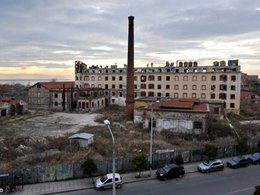
09 May, 2014
Redesigning the silo at the historic Allatini Mills
From machine - building to residences.
Student: Papadopoulou Semni
Supervision: Dousi Maria, Nomikos Michael
Aristotle University of Thessaloniki - Faculty of Engineering - School of Architecture
Presentation date: 21 - 2 - 2014
Contact: seminapap@gmail.com, 6939377494
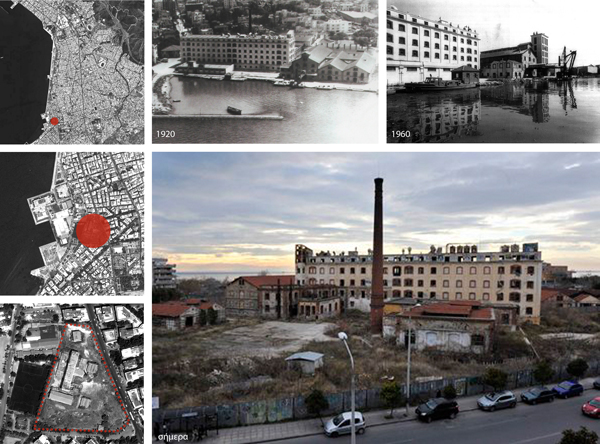
Allatini Mills
Description: This diploma thesis concerns the redesign of the old silo (Building 24) at the historic Allatini Mills to a residential building. The aim of the thesis is the creation of new loft-like residences inside the Building 24 by maintaining its internal structure, which will provide the user with a unique, industrial environment connected to the building's history.
Text: This diploma thesis concerns the redesign of the old silo (Building 24) at the historic Allatini Mills to a residential building. The complex is located on the east side of Thessaloniki between the streets G.Papandreou and M. Callas. This point was used as the space ships unloaded their grain from the Byzantine period, as it used to be littoral. The story of Mills Allatini starts in the mid 19th century and despite any disasters or changes, they continued to operate for over a century.
The study of this thesis focuses more on Building 24, because it considers it one of the most remarkable buildings of the total, with a particular structure, unique in the Balkans. It is a machine-building and this characterization is shown in the way it is organized internally. It is a rectangular four-storey building with dimensions 16,25 x45, 80m, total high 15m, which is longitudinally divided into 11 parts, 4,16m width each. At the first part a large part of the machinery is preserved. The other 10 parts were the spaces where the grain was stored in categories. The floor of the building at those 10 parts is formed as funnel so that the stored grain to be driven into an underground conduit and through an auger to be driven in the Mill.
However, due to modulation of the designation of the building by the Ministry of Culture, from total protection to maintain only the shell, most of the interior of the building is going to be destroyed and replaced by a new concrete construction. We may say that this diploma thesis is a counterproposal, as it is about the creation of new loft-like residences inside the Building 24 by maintaining its internal structure. The building's interior is what makes it so unique and by maintaining it there can be unconventional residences, which will provide the user with a unique, industrial environment connected to the building's history.
The redesign is done in such a way so as to require the fewest possible interventions and to highlight the internal structure. In its first two parts throughout the height, the building is converted into a museum of itself. In the other parts it is converted into loft - like residences mostly for one person or for couples. Each apartment occupies two parts, with the wooden panels to be the centerpiece of each apartment and to divide the space in two. The only additions within the apartments are the volumes that contain the toilets, which have a lower height to be clearly differentiated.
Also, the creation of an addition is recommended, as over the years there was always another building next to Building 24. The aim of the proposal is the addition to have an ephemeral character, which will be easily distinguishable and will contrast with Building's 24 robustness. In order to achieve this other ephemeral constructions, which are related to the industrial site, such as storage sheds, scaffolding and containers are being studied. In an attempt to combine all this together we go back to Building 24, which we deconstruct to its basic parts. These will be the main parts of the addition as well, after being transformed: the roof is being transformed to a canopy like the ones found at the warehouses, the steel structure is being transformed to scaffolding and the wooden panels to containers. As to its function, the addition will "complete" the Building's 24 new function, by creating residences and workspaces. In an effort to organize these we refer to the Le Corbusier's residences in Unité d'Habitation and the artists' ateliers of the 19th century, where work and residence coexist at different levels. This creates work-housing units, consisting of two containers placed one above the other.
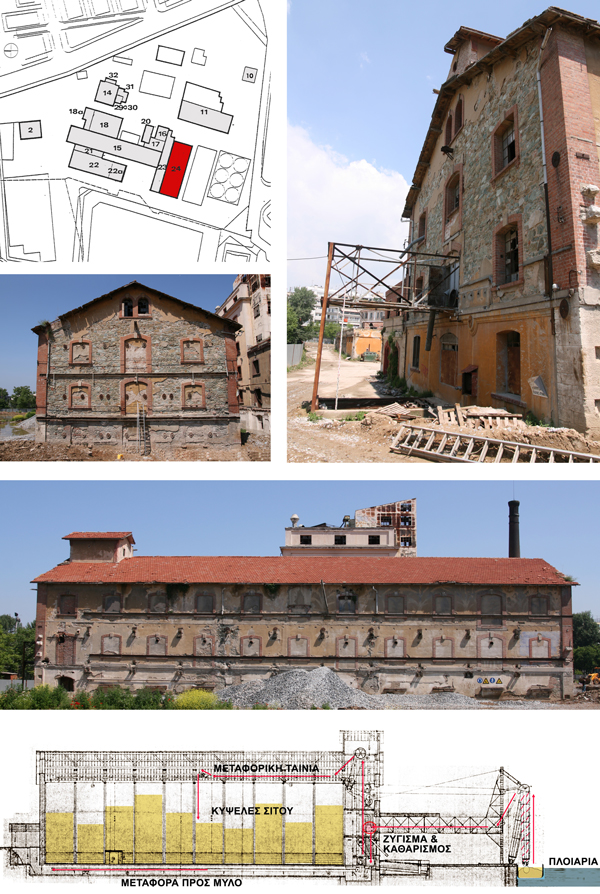
Building 24
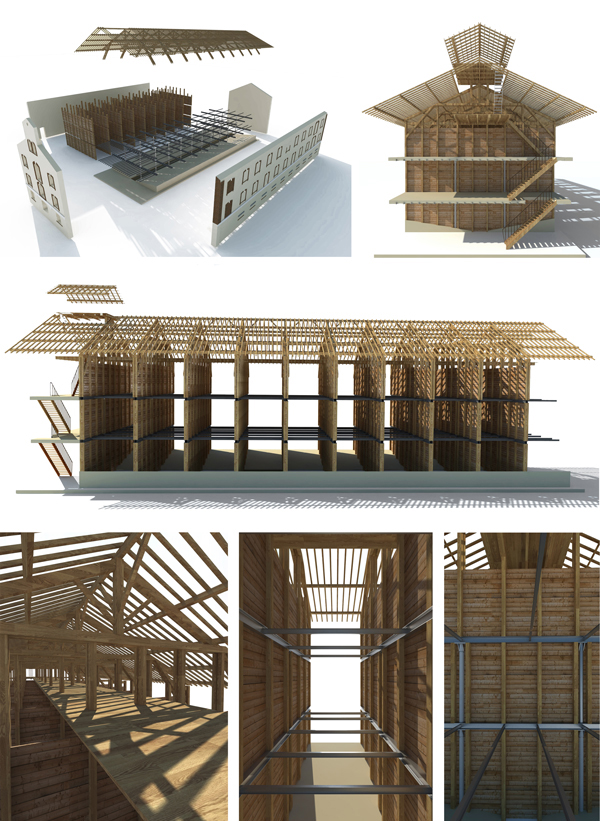
Internal structure
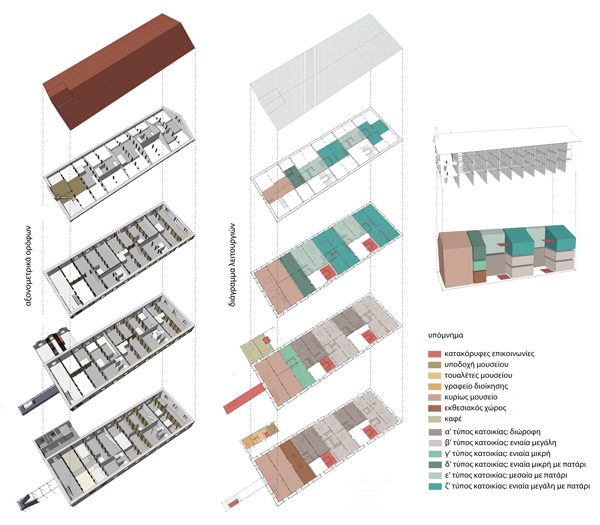
Reuse diagrams
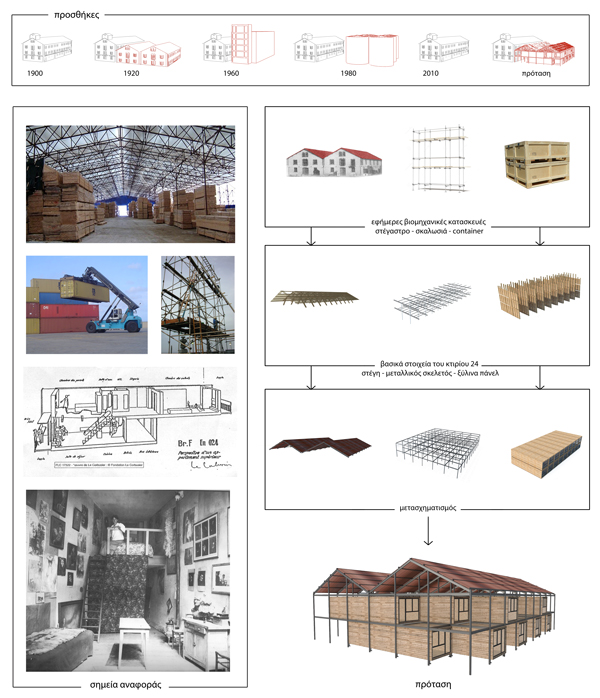
Προσθήκη
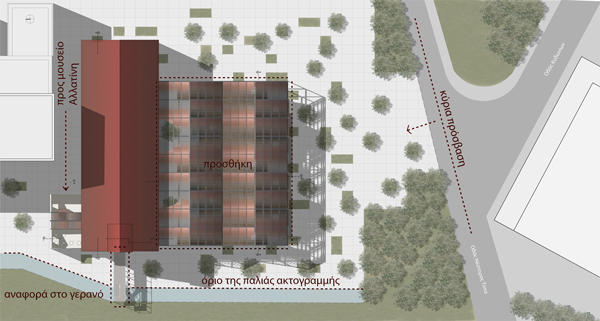
General plan

Plans
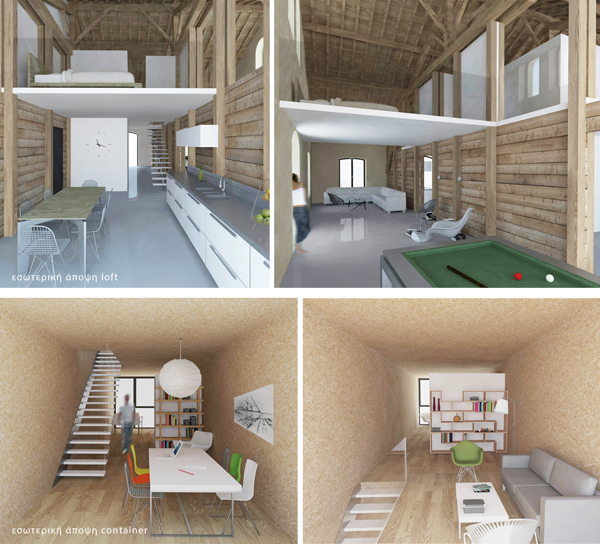
Internal views
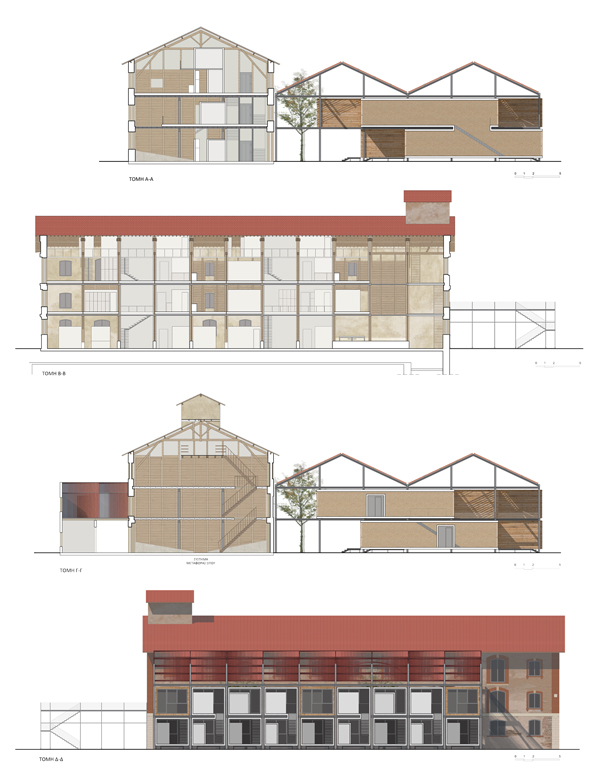
Sections
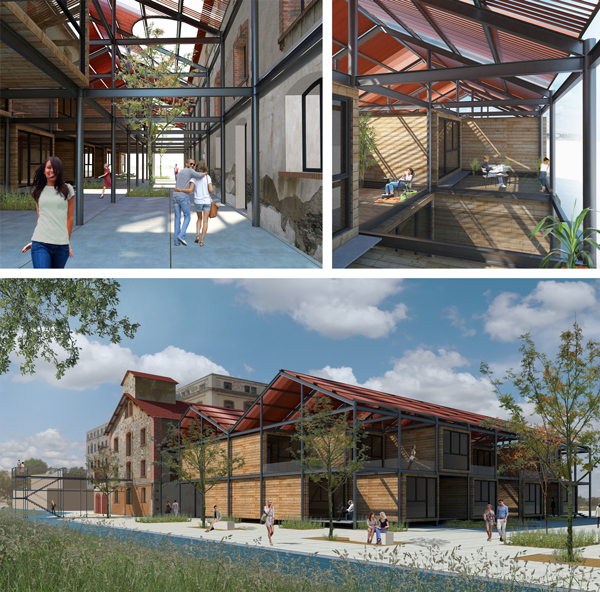
General views
Related articles:
- Industrial Building on the fringes of Attiki Odos ( 15 November, 2009 )
- MEDICAL INSTRUMENTS FACTORY AT RAFINA, ATTICA ( 20 October, 2009 )
- Reutilisation of the building T.A.O.L. in Lefkada ( 23 June, 2010 )
- Routes in the paths of emery ( 01 February, 2011 )
- Urban integration and reuse of the former paper industry of Ladopoulos in Patras ( 20 February, 2011 )
- The old factory of Azel ( 04 April, 2011 )
- Restoration and reuse of the Tzivre silk mill in Soufli ( 14 June, 2011 )
- Project Suggestion for Reusing KOMDE’s industrial complex in Trikala ( 16 August, 2011 )
- Mining Museum in Serifos ( 15 February, 2012 )
- Multi-space of Meditteranean Diet in metropolitan park in Goudi ( 05 March, 2012 )
- Subverting the non use ( 26 March, 2012 )
- Cultural Park in inactive lignite mines of Ptolemaida ( 27 September, 2012 )
- Winery in Nemea ( 01 May, 2012 )
- Industrial landscape in Aliveri ( 16 August, 2013 )
- Memory nd urban sityscape ( 24 May, 2013 )
- Decontamination and Production Mechanism ( 05 February, 2014 )
- Reformation and rehabilitation of an inactive quarry, with spatial location of uses for Tourism, Recreation and Environmental Education ( 10 February, 2014 )
- Restructuring the Industrial Landscape ( 19 July, 2014 )
- inte[R]outes ( 11 December, 2014 )
- Lato and Kekrops Quarries: a walk in the residual landscape ( 28 January, 2015 )
- Print your utopia ( 07 February, 2015 )
- ADAPTIVE REUSE OF A FORMER PAPER FACTORY IN AIGIO AND CONVERSION TO REHABILITATION CENTRE FOR DISABLED PEOPLE ( 12 August, 2015 )










